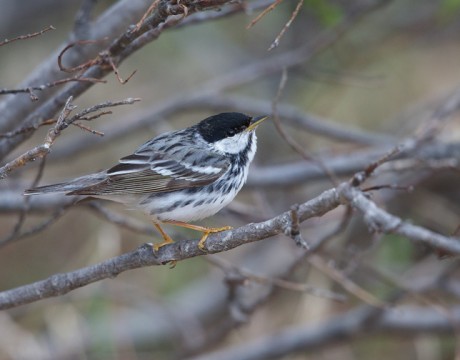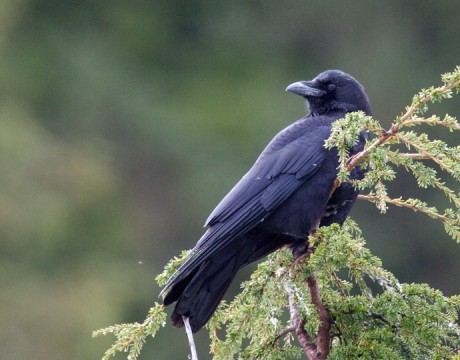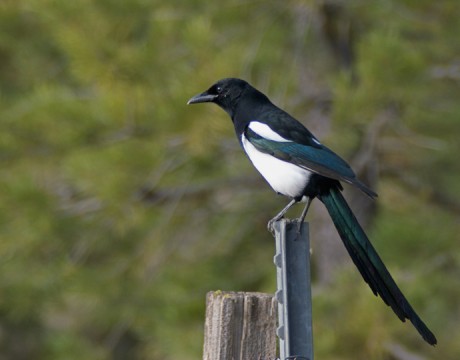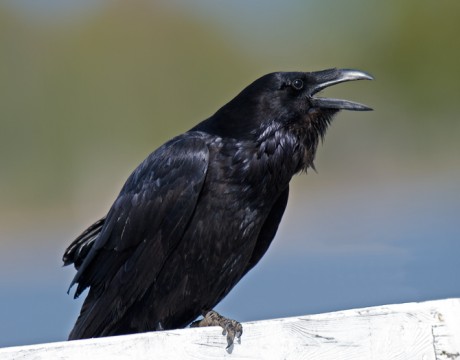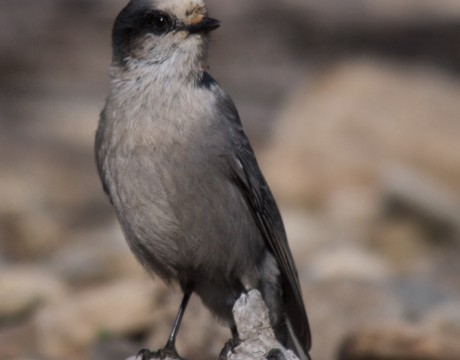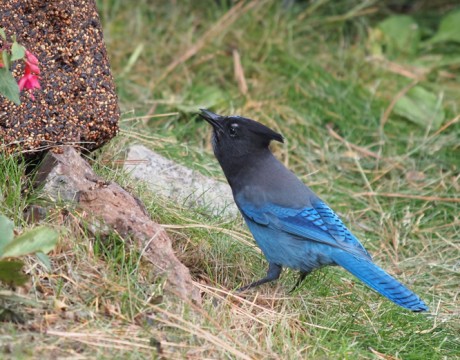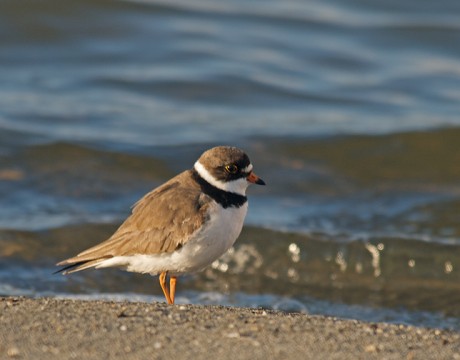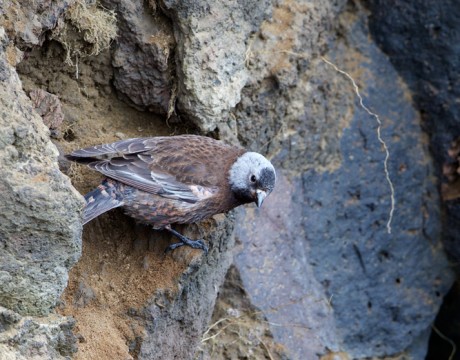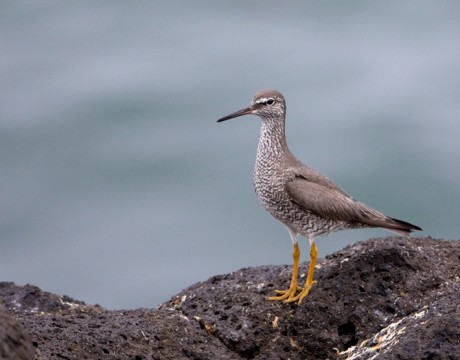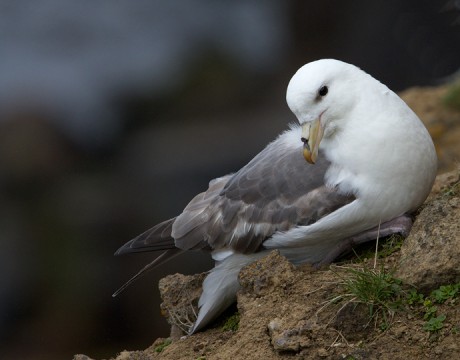Bird of the Week – Blackpoll Warbler
This post is a little late. Sorry. Realy good concert last night. The Blackpoll Warbler breeds in the Boreal Forest south of the Brooks Range and across Canada. It’s a very cool bird for several reasons. First, its breeding and non-breeding plumages are so different that for many years it was thought to be two different species. Here’s a Blackpoll Warbler in breeding plumage along the Denali Highway. And here’s a bird in non-breeding plumage, photographed by Tom Johnson off the coast of Maine in early October. Next, there’s the bird’s song, which is among the highest pitched of any bird…
Bird of the Week – Northwestern Crow
There are four species of crow in North America, but only one breeds or commonly occurs in Alaska, the Northwestern Crow. Smaller than the American Crow, there’s a lot of disagreement among ornithologists about whether the Northwestern Crow may just be a subspecies of its American Crow cousin. For now, based on the size difference and their quite different calls, the American Ornithological Union thinks it is a different species. Camera geek stuff: f8, 1/250, ISO1000. The white drops are rain. For more bird photos, please visit Frozen Feather Images.
Bird of the Week – Black-billed Magpie
WC is staying with corvids – birds of the crow family – a little longer, this time we’ll have a look at the Black-billed Magpie. A bird of myth and legend, like the Common Raven, the species is expanding its range, breeding in the Fairbanks area in recent years. The species readily habituates to people, in fact, when Lewis and Clark first encountered magpies in 1804 in South Dakota, these birds were bold, entering tents to steal meat and taking food from the hand. Magpies sometimes seem to WC to model themselves, showing off their flashy feathers for a photographer. How…
Bird of the Week – Common Raven
You knew it would happen eventually. The Common Raven, Corvus corax, is found essentially everywhere in Alaska, all year around. A lot of folks, WC included, think that the Common Raven should be the state bird. Smart, tough, adaptable and clever. The subject of myth and legend. This is the quintessential Alaska bird. Camera geek stuff: f5.7, 1/250, ISO 125 For more bird photos, please visit Frozen Feather Images.
Bird of the Week – Gray Jay
This is likely the North American bird with the most nicknames: Camp Robber, Whiskey Jack, Canada Jay, lumberjack, meat-bird, venison-hawk, moose-bird and gorby. A signature bird of the Boreal Forest, the Gray Jay is also one of the species that most easily habituates to people. It has a huge repertoire of vocalizations, including the soft “cheo” and “chef chef chef” that are mostly commonly heard in the woods. A master of caching food, it’s a species that succeeds and prospers through the long subarctic winter. Camera geek stuff: f5.7, 1/1600, ISO 200 For more bird photos, please visit Frozen Feather Images.
Bird of the Week – Steller’s Jay
The story may be apocryphal. Georg Wilhelm Steller was a German who served as naturalist on Vitus Bering’s ill-fated expedition to Alaska 1740-41. Among his references for the trip was a plate of a Blue Jay sent to him by one Benjamin Franklin, an amateur naturalist in the British colonies. The similarities between the Blue Jay in Franklin’s plate and the bird later named the Steller’s Jay provided Georg Steller with biological evidence that Vitus Bering had found westernmost North America. This particular bird can’t believe his luck: it has found a fallen seed cake in a downtown Seward park….
Bird of the Week – Semipalmated Plover
Alaska’s most numerous small plover, the Semi-palmated Plover comes to Alaska to breed. The “semiplamated” refers to the bird’s feet, which have webbing extending about halfway down the toes. A beautifully marked bird, the nest is simply a scratched bit of gravel, often on a gravel airport runway or a little-used road, but most often on a river bar. The male works hard to lead you away from the nest. Camera geek stuff: f5.7, 1/250, ISO 200 For more bird photos, please visit Frozen Feather Images.
Bird of the Week – Gray-crowned Rosy Finch
There are distinct populations of Gray-crowned Rosy-Finches; this is the largest, most colorful, the Bering Sea variety. The St. Paul variety is distinctly larger than the mainland variety, nearly Robin-sized. They are fairly common on St. Paul. And a treat to see under any circumstances. Camera geek stuff: f8, 1/160, ISO 1000 For more bird photos, please visit Frozen Feather Images.
Bird of the Week – Wandering Tattler
For many years, this was WC’s nemesis bird, a bird he might see in the distance but had been purely unable to photograph. On St. Paul Island, WC finally found a reasonably cooperative Tattler. A fairly uncommon shorebird, it breeds inland along gravel stream banks, but spends most of the year on the mudflats and rocky shores of the Pacific Coast, wintering all the way down to Baja California. It has a wonderful flight song, a ringing, whistled deedle deedle deedle dee. Camera geek stuff: f4, 1/6400, ISO 1000 For more bird photos, please visit Frozen Feather Images.
Bird of the Week – Northern Fulmar
The Northern Fulmar is a member of the family Procellaridae, the tubenoses. The tube-like structure on top of the bill allows the Northern Fulmar to excrete salt, making it independent of any need for fresh water. It some ashore only to lay eggs and raise its young. While it has a superficial resemblance to a gull, they are only distant relatives. This pretty lady was on a single egg. The pale morph, in WC’s limited experience, is less common than the dark morph in Alaska waters. Camera geek stuff: f11, 1/1600, ISO 100 For more bird photos, please visit Frozen Feather Images.





